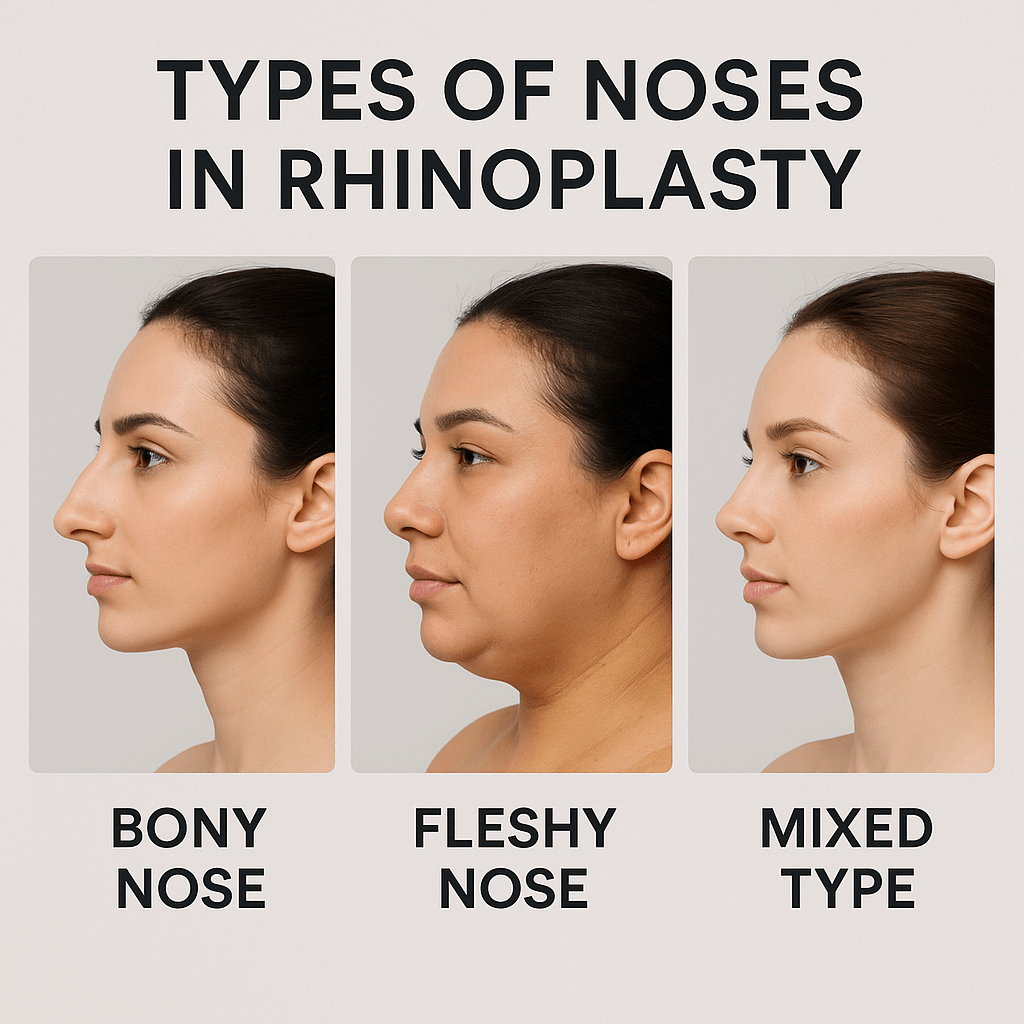In the preoperative evaluation of rhinoplasty, accurately identifying the type of nose in terms of anatomical structure and histology is of particular importance. In general, noses are divided into two main categories:
- Bony Nose
- Characteristics:
- Thin to medium skin
- Strong bony and cartilaginous structure
- Greater detail visibility after surgery
- Advantages:
- Due to thinner skin and a strong framework, surgical results in bony noses are usually more precise and longer-lasting
- Characteristics:
- Fleshy Nose
- Characteristics:
- Thick skin and active sebaceous glands
- Weaker cartilage, especially at the nasal tip
- Less defined skeletal structure
- Challenges
- In fleshy noses, there is a need to reinforce the nasal tip structure and manage the thick skin. Reinforcement techniques and the use of grafts are very important in these cases
- Characteristics:
- Mixed Type
- Some patients have a combination of features from both bony and fleshy nose types. Accurate evaluation and selecting a surgical technique appropriate to the tissue condition are essential in these cases.

